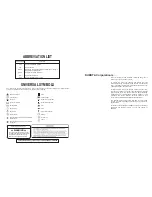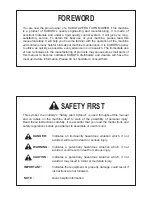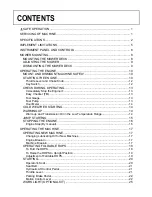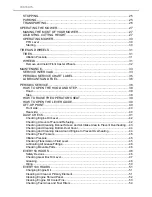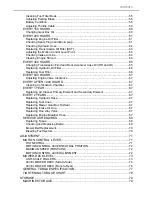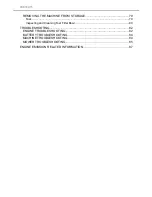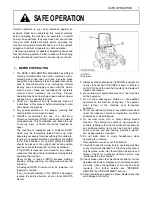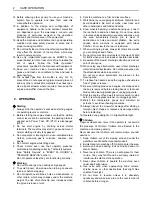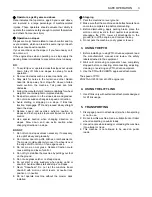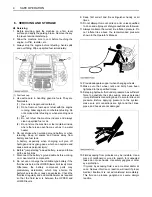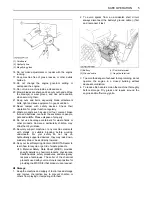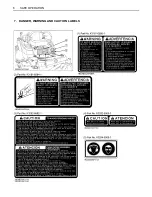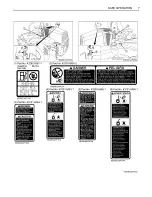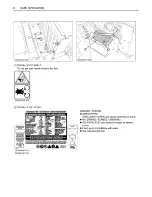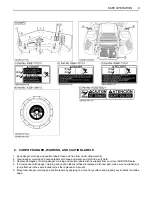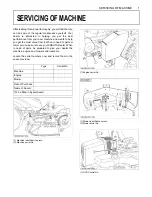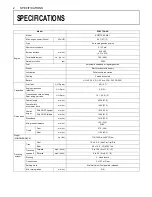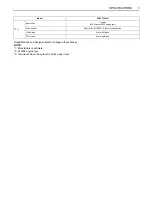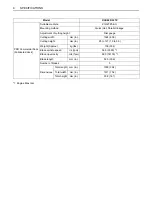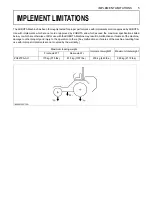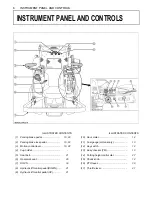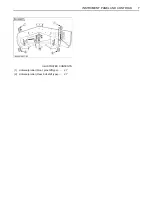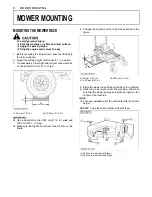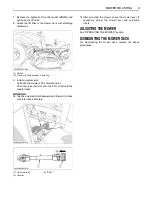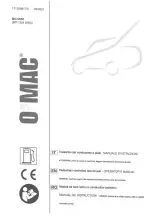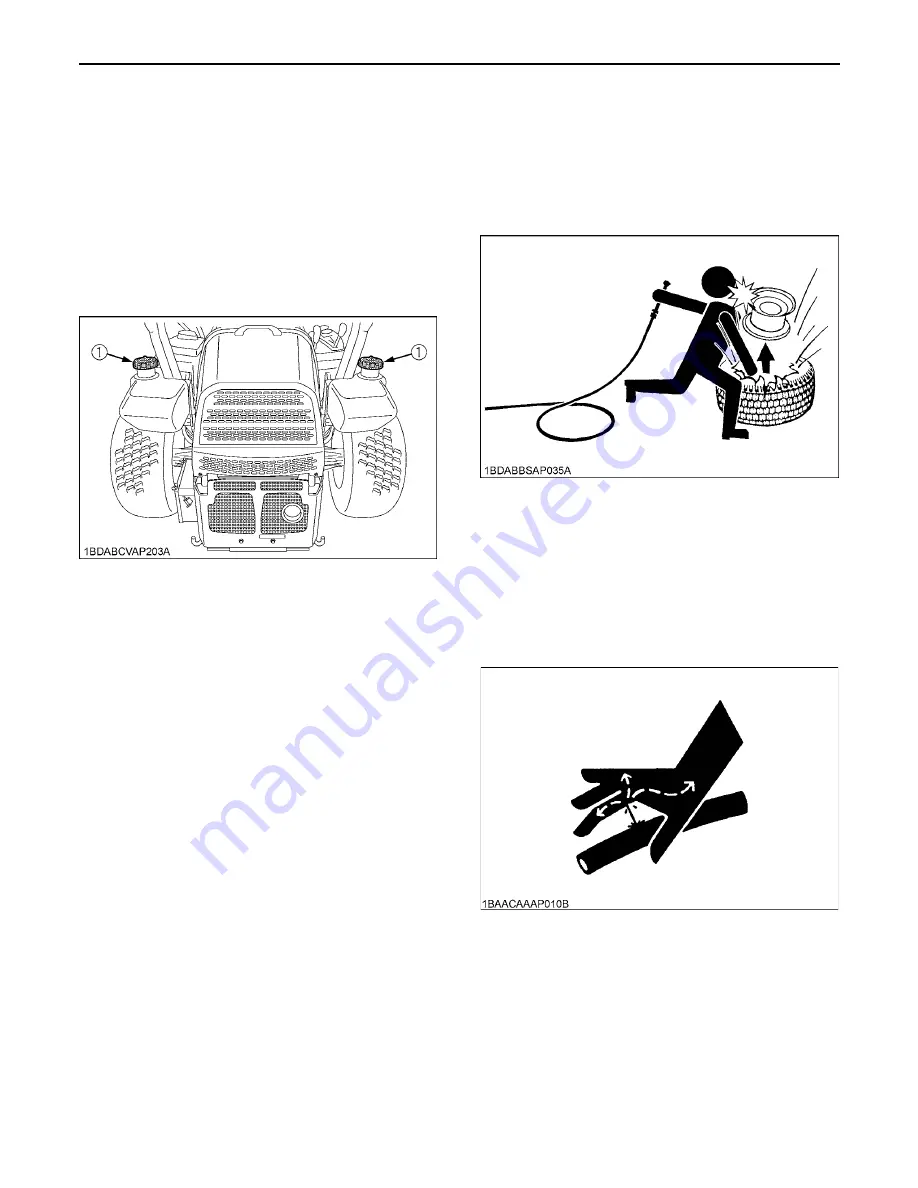
SAFE OPERATION
4
C
Servicing
1. Before servicing, park the machine on a firm, level
surface and apply the parking brake. Remove the key
to prevent accidental start-up.
2. Allow the machine time to cool before touching the
engine, muffler, radiator, etc.
3. Always stop the engine before refueling. Avoid spills
and overfilling. Wipe up spilled fuel immediately.
4. Use extra care in handling gasoline fuels. They are
flammable.
(1) Use only an approved container.
(2) Do not remove fuel cap or refuel with the engine
running. Allow engine to cool before refueling. Do
not smoke while refueling or when standing near
fuel.
(3) Do not refuel the machine indoors and always
clean up spilled fuel or oil.
(4) Do not store the machine or fuel container inside
where there is an open flame, such as in a water
heater.
5. Do not smoke when working around battery or when
refueling. Keep all sparks and flames away from
battery and fuel tank.
A battery, especially when charging, will give off
hydrogen and oxygen gases, which can explode and
cause serious personal injury.
6. Before "jump starting" a dead battery, read and follow
all the instructions.
7. Disconnect the battery's ground cable before working
on or near electric components.
8. Do not use or charge the refillable type battery if the
fluid level is below the LOWER (lower limit level) mark.
Otherwise, the battery component parts may
prematurely deteriorate, which may shorten the
battery's service life or cause an explosion. Check the
fluid level regularly and add distilled water as required
so that the fluid level is between the UPPER and
LOWER levels.
9. Keep first aid kit and fire extinguisher handy at all
times.
10. Do not attempt to mount a tire on a rim unless qualified
to do so and all proper safety precautions are followed.
11. Always maintain the correct tire inflation pressure. Do
not inflate tires above the recommended pressure
shown in the Operator's Manual.
12. Provide adequate support when changing wheels.
13. Make sure that wheel nuts and bolts have been
tightened to the specified torque.
14. Escaping hydraulic fluid under pressure has sufficient
force to penetrate the skin causing serious personal
injury. Before disconnecting lines, be sure to relieve all
pressure. Before applying pressure to the system,
make sure all connections are tight and that lines,
pipes, and hoses are not damaged.
15. Fluid escaping from pinholes may be invisible. Use a
piece of cardboard or wood to search for suspected
leaks: do not use hands. Use safety goggles or other
eye protection.
If injured by escaping fluid, see a medical doctor at
once. Serious infection or reaction will result if proper
medical treatment is not administered immediately.
This fluid can produce gangrene or severe allergic
reaction.
6. SERVICING AND STORAGE
(
1) Fuel tank cap
Summary of Contents for ZG327A-AU
Page 13: ...SAFE OPERATION 6 7 DANGER WARNING AND CAUTION LABELS ...
Page 14: ...7 SAFE OPERATION ...
Page 15: ...SAFE OPERATION 8 ...
Page 17: ......
Page 52: ...35 MAINTENANCE PERIODIC SERVICE CHART LABEL 1 Part No K3287 6552 ENGLISH ...


